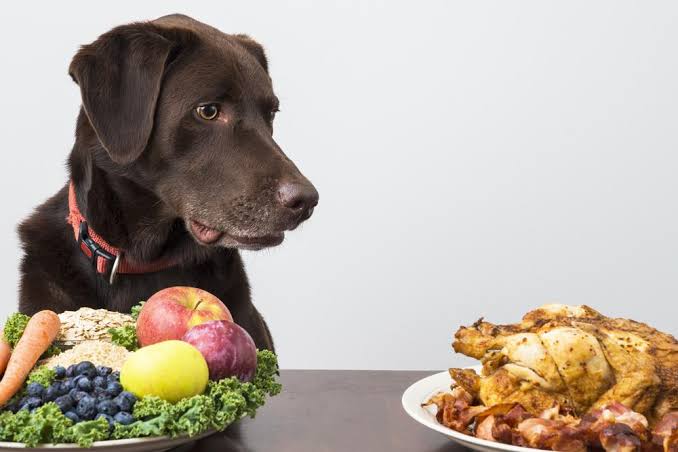
How to Ensure Homemade Pet Food is Balanced and Nutritious
Creating balanced homemade pet food requires careful planning and a deep understanding of your pet's nutritional needs. This guide will help you select the right ingredients, calculate appropriate portions, and address potential nutritional deficiencies.
🐶 Pet Star
12 min read · 31, Jan 2025

1. The Importance of Nutritional Balance:
Just like humans, pets have specific nutritional requirements. Deficiencies in essential nutrients can lead to various health problems, such as:
- Stunted growth: In young animals.
- Weak immune system: Increased susceptibility to infections.
- Skin and coat issues: Dull coat, dry skin, and excessive shedding.
- Joint problems: In older pets.
- Dental issues: Poor dental health.
2. Calculating Nutritional Requirements:
Determining the appropriate amount of each nutrient can be challenging.
- Consult with your veterinarian: They can provide personalized guidance based on your pet's breed, age, weight, and activity level.
- Use online resources: Several online calculators and resources can help you estimate your pet's daily caloric needs.
- Keep accurate records: Track your pet's food intake and weight to monitor their progress and make adjustments as needed.
3. Selecting the Right Ingredients:
- Protein Sources:Lean meats: Chicken, turkey, beef, fish (salmon, tuna, cod) – choose lean cuts and remove excess fat.
- Eggs: Excellent source of protein and essential nutrients.
- Greek yogurt: Provides protein and probiotics for gut health.
- Lentils: A good plant-based protein source, especially for vegetarian or vegan diets.
- Carbohydrate Sources:Brown rice: A whole grain rich in fiber and nutrients.
- Sweet potatoes: Excellent source of vitamins and minerals.
- Oatmeal: Provides fiber and essential fatty acids.
- Quinoa: A complete protein source with high fiber content.
- Healthy Fats:Olive oil: Adds healthy fats and antioxidants.
- Coconut oil: Supports skin and coat health.
- Flaxseed: Rich in omega-3 fatty acids.
4. Essential Supplements:
Even with a carefully selected diet, supplementation may be necessary to ensure your pet receives all the essential nutrients.
- Calcium and Phosphorus: Crucial for bone health, especially for growing pets.
- Vitamin D: Essential for calcium absorption.
- Omega-3 Fatty Acids: Supports skin, coat, and brain health.
- Glucosamine and Chondroitin: Beneficial for joint health in older pets.
- Taurine: Essential for cats and some other species.
5. Addressing Potential Nutritional Deficiencies:
- Vitamin A: Found in carrots, spinach, and sweet potatoes.
- Vitamin C: Found in broccoli, bell peppers, and leafy greens.
- Vitamin E: Found in spinach, almonds, and sunflower seeds.
- Iron: Found in lean meats, spinach, and lentils.
- Zinc: Found in beef, poultry, and oysters.
6. Creating a Balanced Recipe:
Here's a simple framework for creating a balanced homemade pet food recipe:
- Protein: 30-70% of the total diet (depending on your pet's age and activity level).
- Carbohydrates: 20-40% of the total diet.
- Fats: 15-30% of the total diet.
7. Monitoring Your Pet's Health:
Regularly monitor your pet's weight, body condition score, and overall health.
- Consult with your veterinarian: Schedule regular check-ups to assess your pet's overall health and ensure the homemade diet is meeting their nutritional needs.
- Look for signs of nutritional deficiencies: These may include dull coat, weight loss, lethargy, and poor appetite.
- Adjust the recipe as needed: Make adjustments to the recipe based on your pet's individual needs and preferences.
8. Important Considerations:
- Food safety: Always practice good hygiene when preparing and handling pet food.
- Consistency: Maintain a consistent feeding schedule to help regulate your pet's digestion.
- Avoid sudden changes: Introduce new ingredients gradually to avoid digestive upset.
Q&A Section
Ques 1: How do I know if my pet is getting enough protein?
Ans: Signs of protein deficiency may include weight loss, muscle loss, and decreased energy levels. If you suspect a protein deficiency, consult with your veterinarian to adjust your pet's diet.
Ques 2: Can I use table scraps in my pet's homemade food?
Ans: While some table scraps, such as cooked vegetables and lean meats, can be incorporated into your pet's diet, it's important to avoid feeding them anything that is toxic to pets, such as chocolate, onions, garlic, and grapes.
Ques 3: How often should I change my pet's homemade food recipe?
Ans: You can introduce variations to your pet's diet to prevent boredom and ensure they receive a wide range of nutrients. However, avoid making drastic changes too frequently, as it can upset your pet's digestive system.
Ques 4: What if my pet doesn't like the homemade food?
Ans: Don't worry! You can experiment with different flavors and textures to find something your pet enjoys. Try adding small amounts of cooked liver or bone broth for extra flavor. You can also try different cooking methods, such as steaming or stir-frying.
Similar Articles
Find more relatable content in similar Articles

Composting Pet Waste: A Greener Way to Clean Up...
As pet ownership continues to .. Read More

Pets and Mental Health: The Science Behind Emotional H..
Discover the profound impact o.. Read More

Virtual Vet Visits: Are Online Consultations Reliable?..
As pet healthcare embraces dig.. Read More

Social Media for Pets: Turning Your Pet into a Digital..
From playful puppies to charis.. Read More
Explore Other Categories
© 2024 Copyrights by rPets. All Rights Reserved.